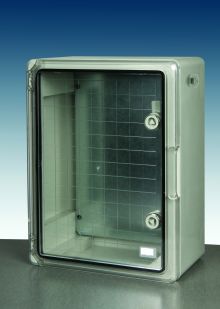
Enclosures can breathe easy with Hylec-APL venting elements
One of the biggest challenges faced when installing electrical enclosures outside or in environments with fluctuating temperatures, is preventing condensation from forming internally and causing damage. Hylec-APL venting elements are the ideal accessory for ensuring pressure equilibrium is maintained while preventing moisture from being drawn into the enclosure from the surrounding environments.
When an enclosure is exposed to regularly changing temperatures, the air inside will expand and contract as it heats and cools respectively. As the air contracts, the internal pressure decreases and begins to draw air in from the surrounding environments –containing moisture which will form condensation as it makes contact with the enclosure walls. Even if an enclosures is in a stable environment, this type of water ingress can still occur if the internal electronics produce excessive heat which causes the internal temperatures to rise. Almost every sealed enclosure on the market, especially enclosures with a high IP rating, are be susceptible to water ingress of this type if the temperatures fluctuation causes a great enough pressure differential.
Fortunately Hylec-APL offers a range of venting elements which ensure pressure equilibrium is maintained between the inside and outside of the enclosures, whilst also preventing the build-up of condensation. The breathable membrane is quickly installed on the wall of the enclosure and allows the internal air pressure to equalise without drawing in any moisture.
The low cost accessory is as easy to install as a simple cable gland and can prevent failures which could cost thousands in lost productivity and repair bills. It is supplied with an M12 thread fitting with a short (6mm) or standard (10mm) length, and is constructed from flameproof polyamide. The venting element operated in temperatures varying between -40°C and 100°C and can be specified to protection grades IP66, IP67 and IP69K. The typical airflow rate is 90-130mnl/min/cm2 at Δp=0.01 bar.
Recent News
-
02/01/2025
BCL Enclosures joins Hylec -
27/09/2024
Hylec Showing at EDS 2024 We are exhibiting at EDS... -
30/01/2024
Exciting New Appointments for Hylec Hylec Kickstarts... -
11/01/2024
Hylec Go Kart Grand Prix The line-up for the first... -
01/12/2023
Hylec Closing dates for Christmas Hylec-APL will be closed from... -
01/02/2023
Hylec introduces new, improved Debox SL Hylec introduces the...
01933 234400


